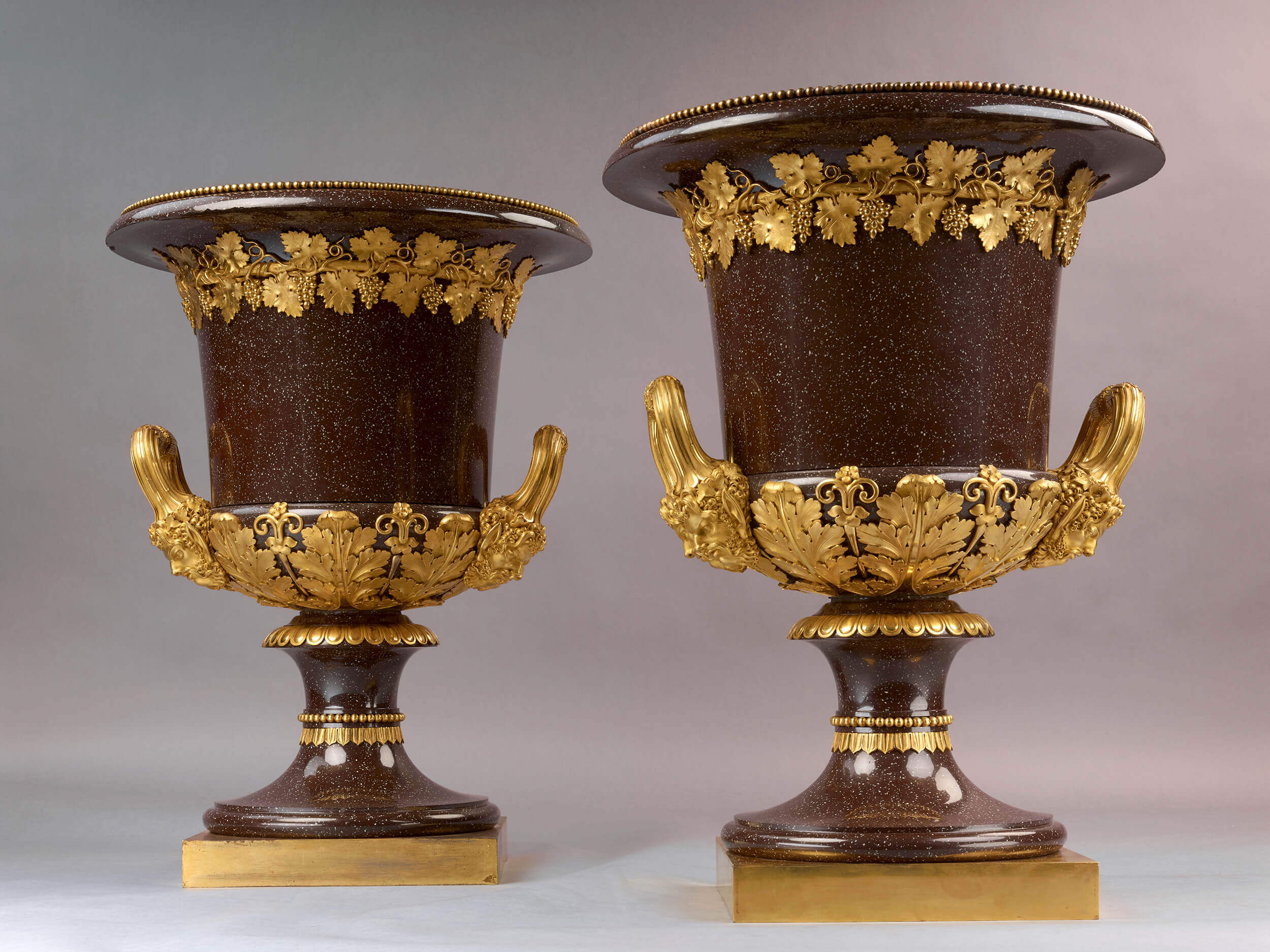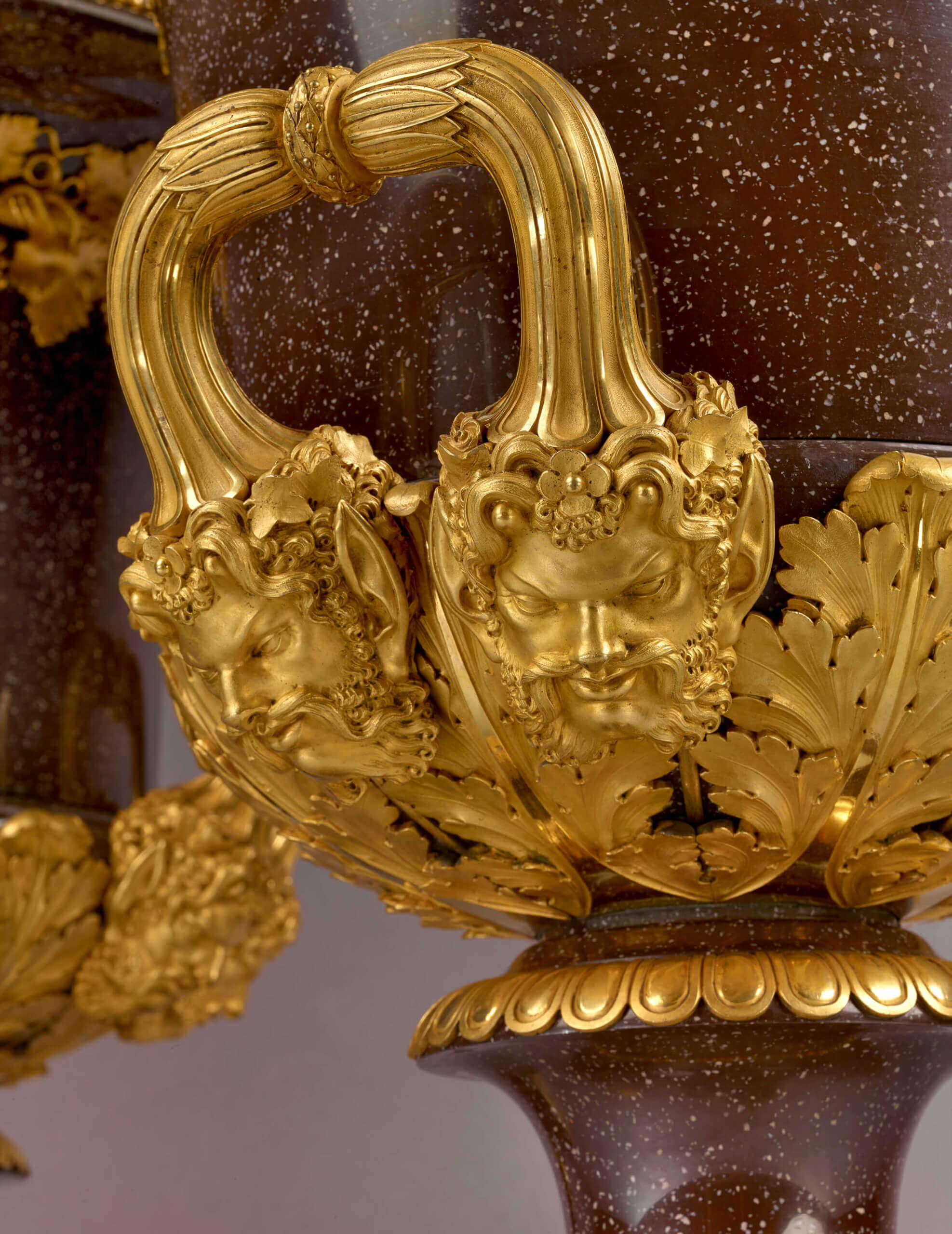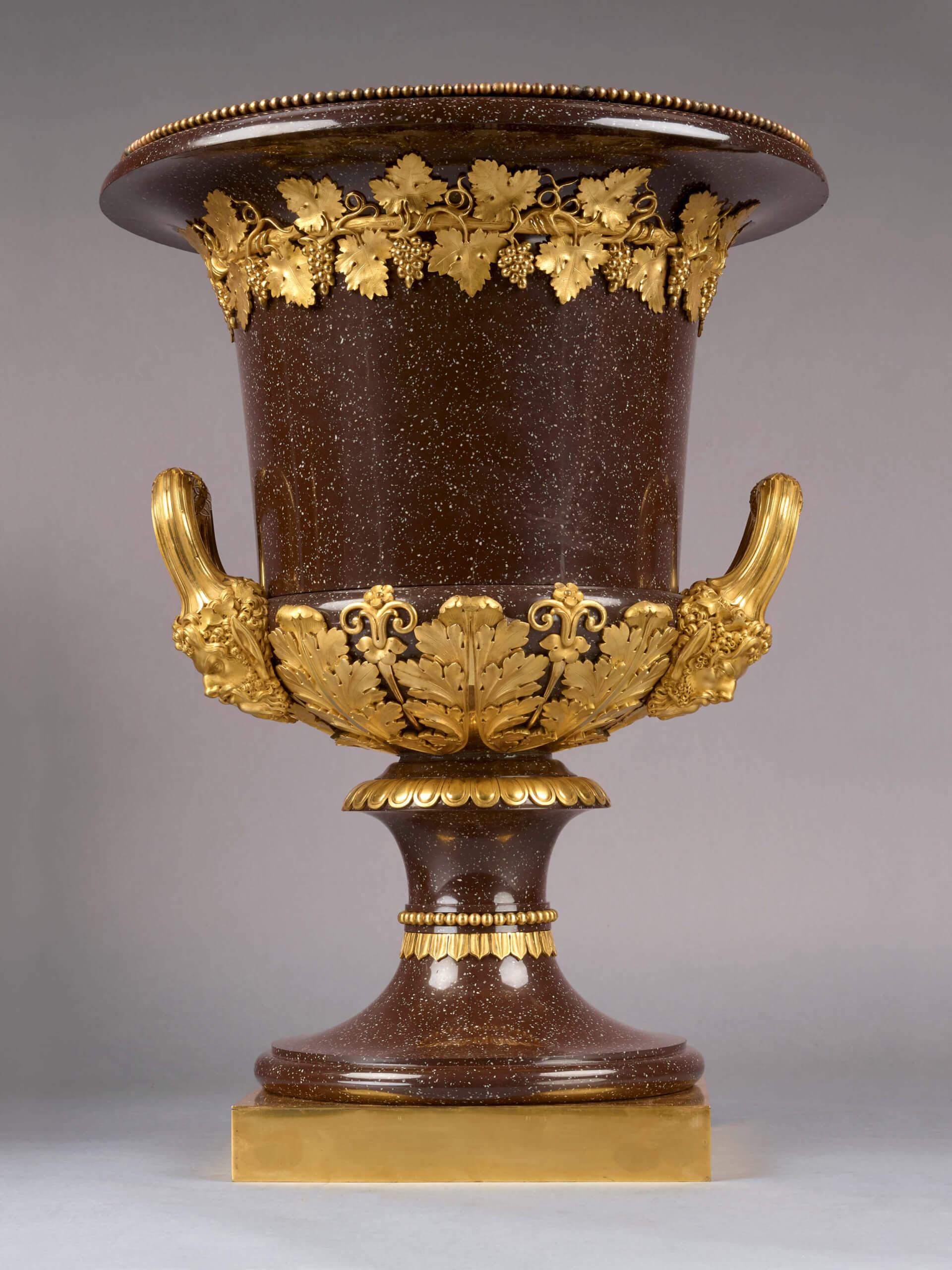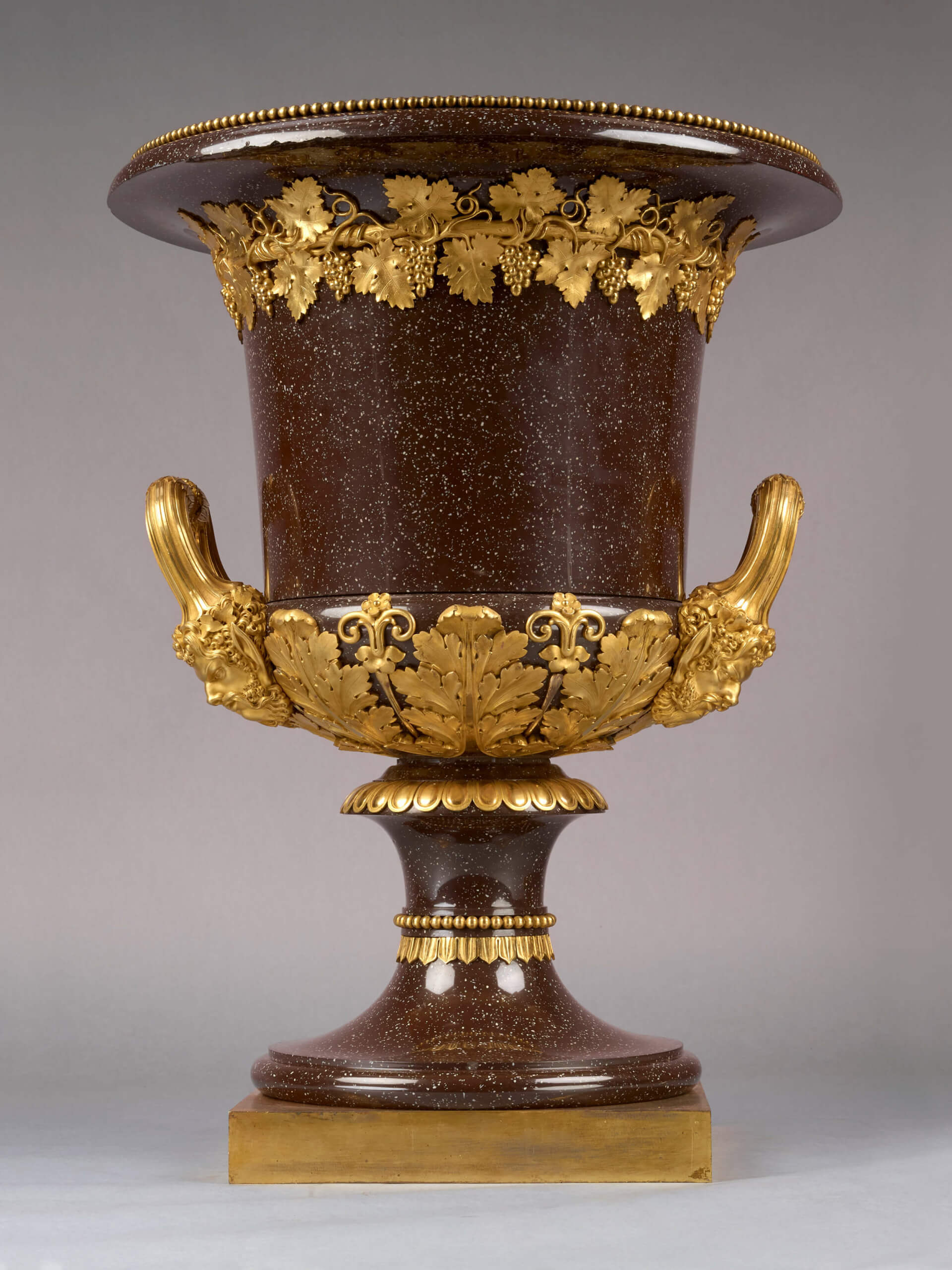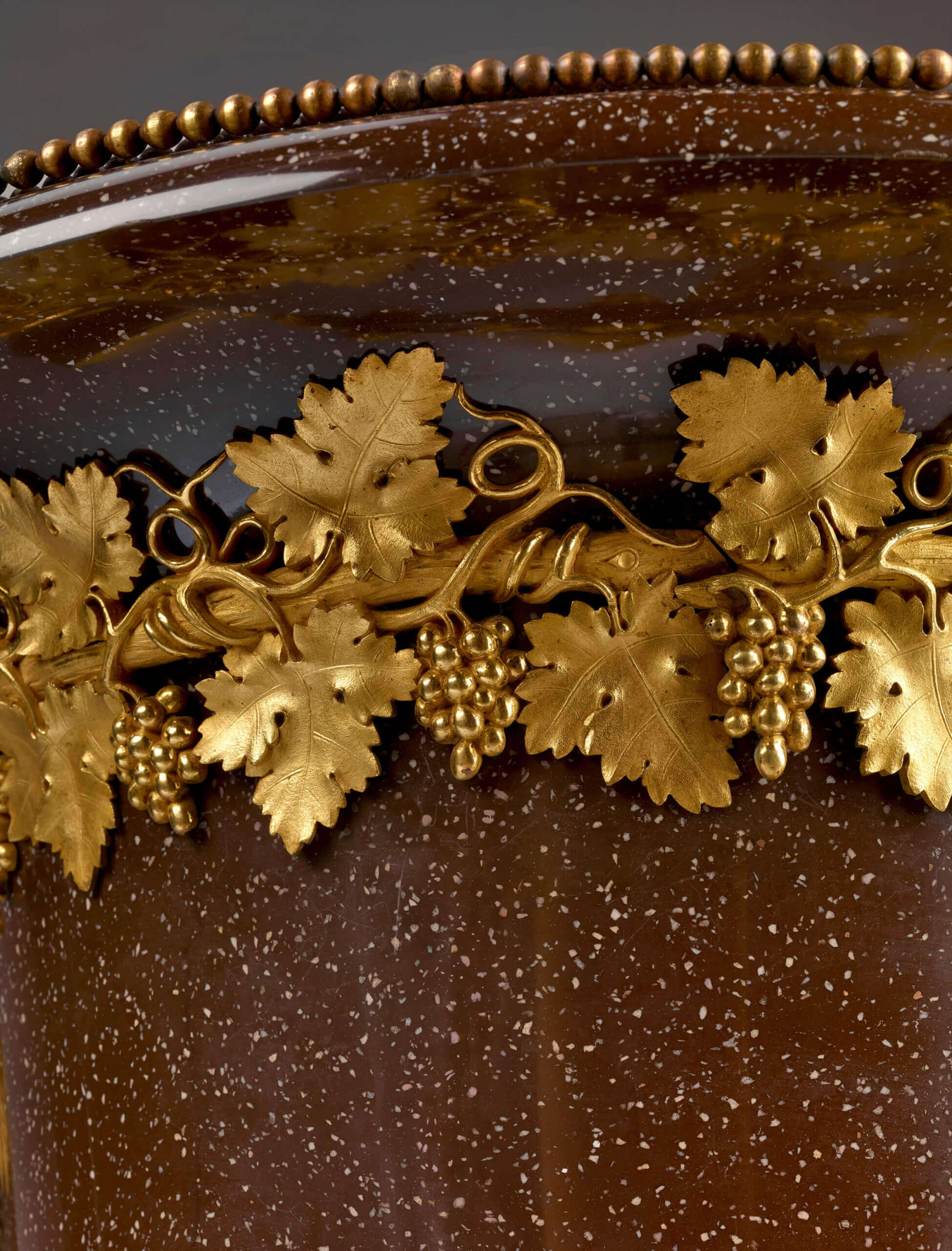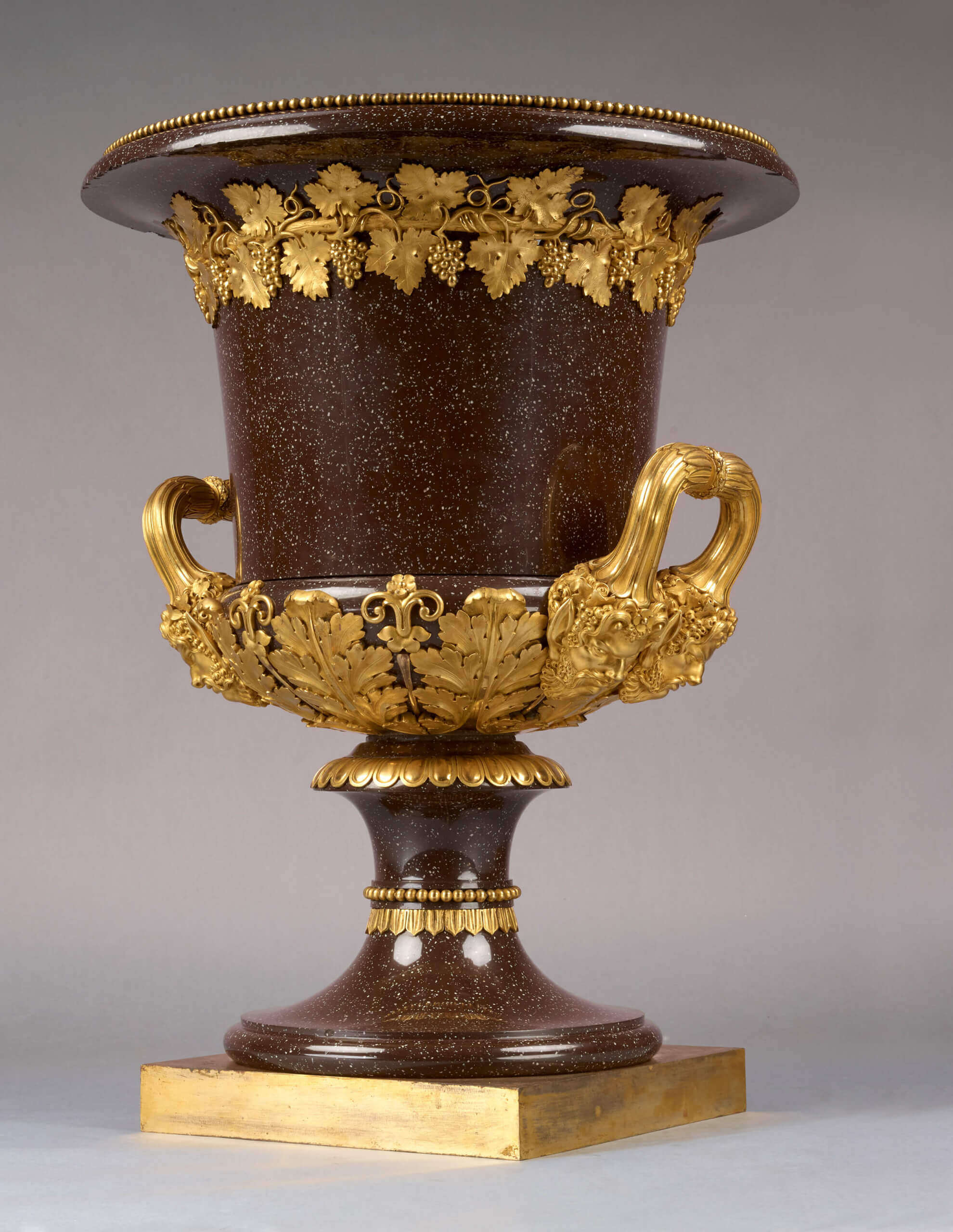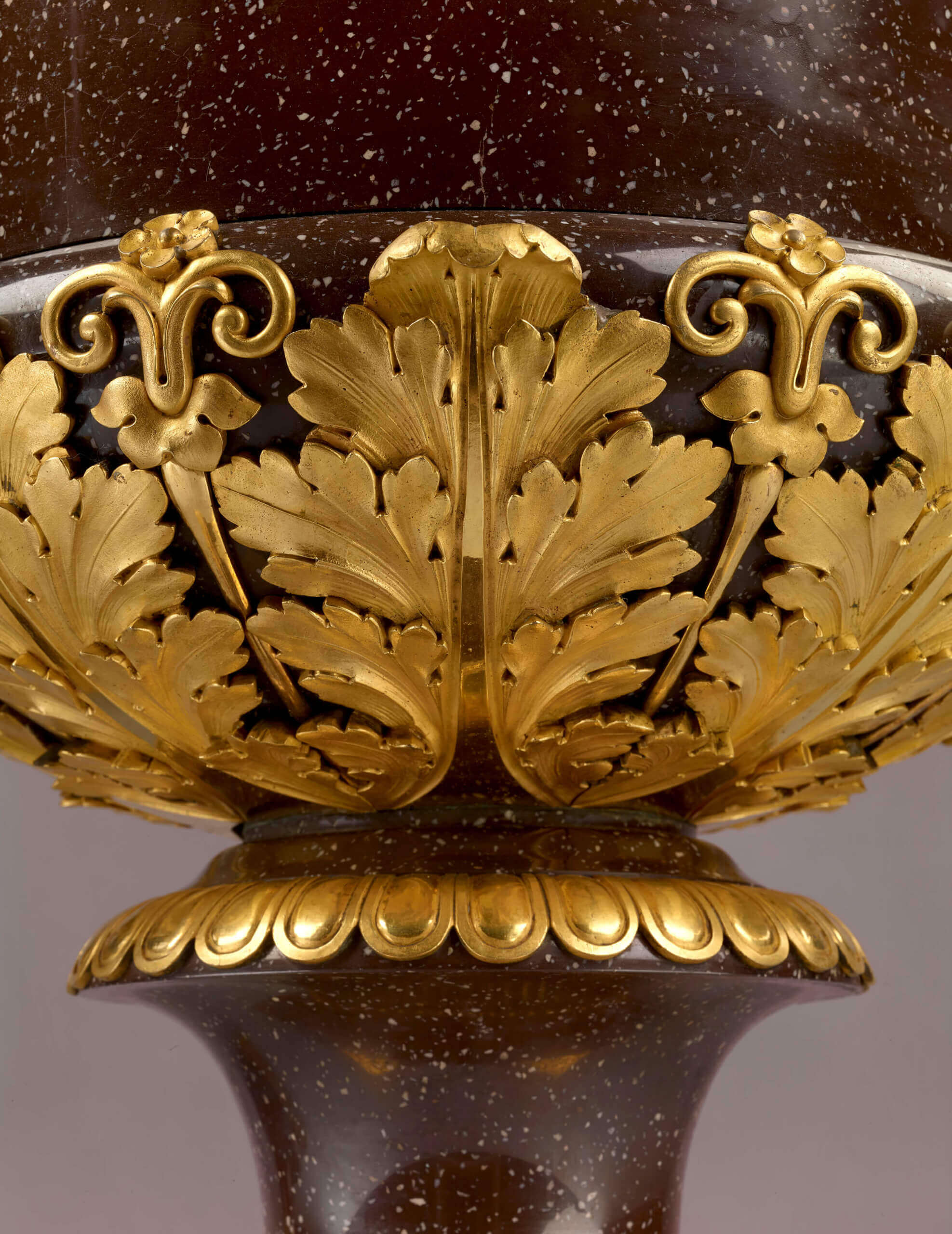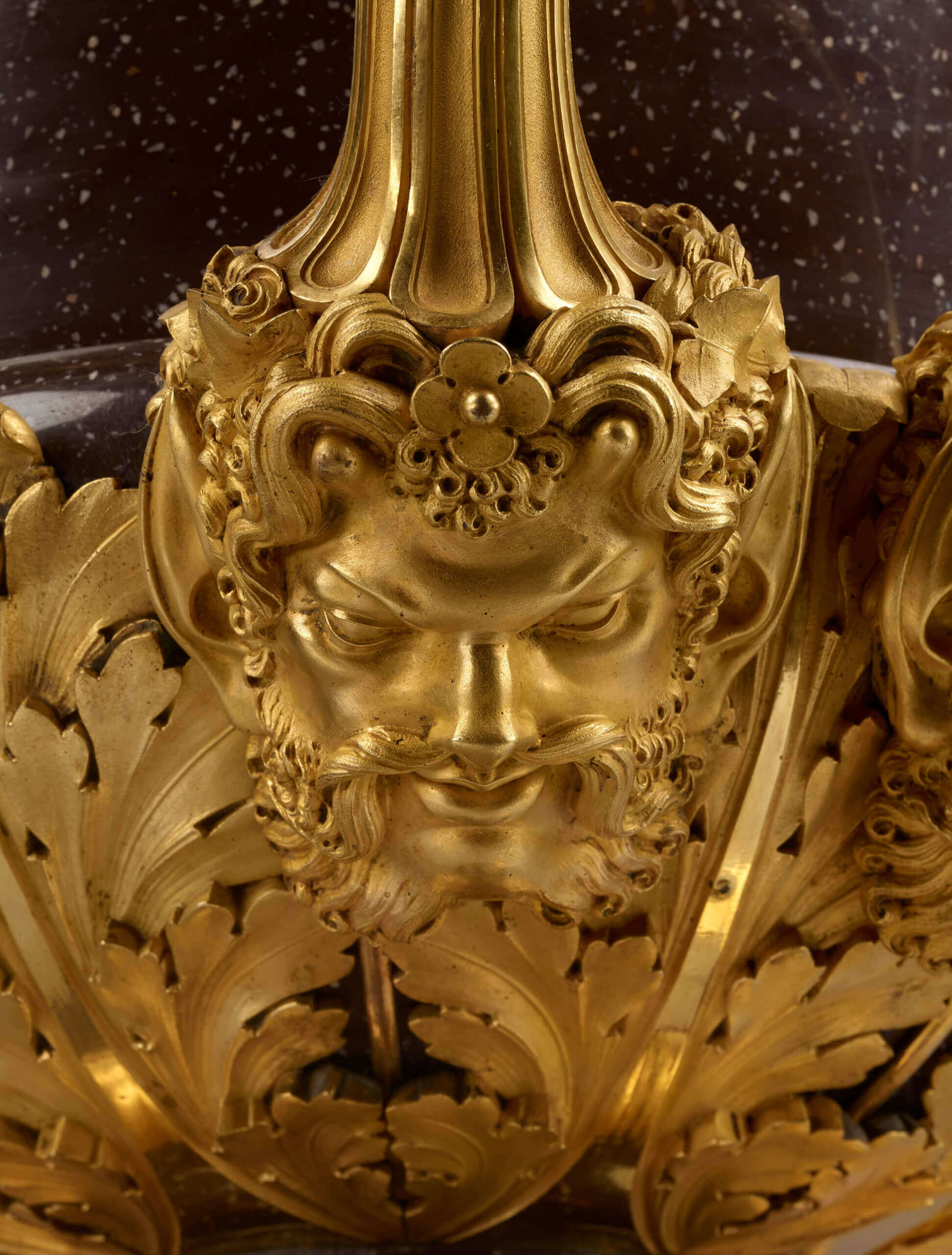

SARREGUEMINES, FABRY AND UTZSCHNEIDER MANUFACTURE
France, Sarreguemines, Utzschneider & Co. manufacture, Empire period, 1810-1812.
Fine Sarreguemines pottery in imitation of “brown and white porphyry”; gilt bronze.
Total H. with bronze base: 68 cm. (26 ¾ in.); D. 54 cm. (21 ¼ in.).
PROVENANCE: delivered in 1812 by Joseph Fabry and François-Paul Utzschneider, manufacturers in Sarreguemines, on behalf of the Imperial Garde-Meuble, following the large order placed by the Garde-Meuble with the Sarreguemines manufacturers on 31st October 1810; placed in storage in the warehouses of the Garde-Meuble Impérial; sent to Rome in 1818 in order to furnish the French Embassy to the Holy See, which had been headed since 1816 by Pierre-Louis-Jean-Casimir de Blacas d’Aulps (1771-1839), Count and future 1st Duke of Blacas (1821); taken by the latter to Naples in 1819, where the Count was engaged on a diplomatic mission to the King of the Two Sicilies alongside his duties in Rome; most certainly kept by the Duke, who had meanwhile been made Prince of Blacas in 1837, for his own personal benefit; indeed, there is no extant record in either the archives of the Garde-Meuble or those of the Ministry of Foreign Affairs of the sale of such vases, which, had it taken place, would inevitably have entailed their transportation to Paris and consequently left some record behind.
LITERATURE: Chantal Gastinel-Coural, “L’ambassade de France à Vienne: décor intérieur et ameublement (1907-1914)”, Bulletin de la Société de l’histoire de l’art français, 1990, p. 276 and 288, note 140; Pierre Arizzoli-Clémentel and Jean-Pierre Samoyault, Le mobilier de Versailles, chefs-d’œuvre du XIXe siècle, Dijon, 2009, p. 302-303, cat. n° 114; Chantal Gastinel-Coural, Ambassade de France à Vienne, place Schwartzenberg, Paris, Éditions internationales du patrimoine, 2011.
Born on 10th January 1771 in Vérignon, in the department of Var, Pierre Louis Jean Casimir de Blacas d’Aulps was a great collector. During his repeated journeys to the Italian peninsula, he showed an open taste, which was enhanced by his active association with Florentine, Roman and Neapolitan social circles. His connections with European monarchies in course of time were to provide him with the resources he needed to pursue his passion for Antiquity as well as his interest in contemporary art. The bulk of his collection of antiques, reflecting the Duke’s personal convictions as well as revealing his perfect integration into Italian artistic, intellectual and mercantile circles at the beginning of the 19th century, was sold by his descendants to the British Museum in 1866.
